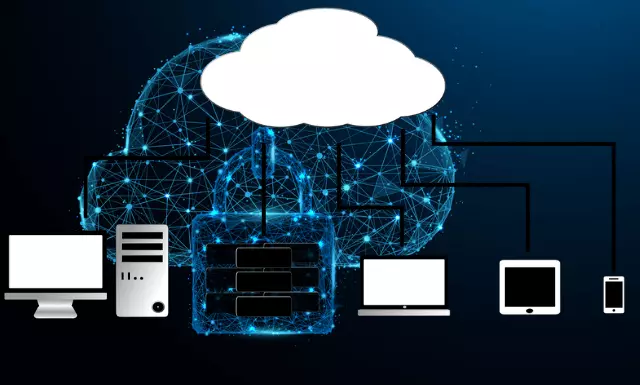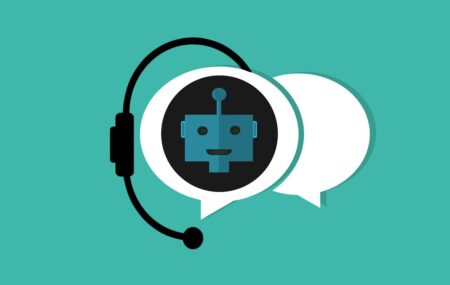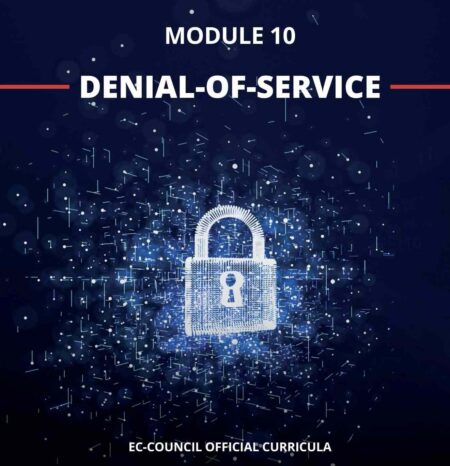Cloud security, also known as cloud computing security is the ecosystem of people, processes, policies, and technology that work together to protect cloud-based systems, data, infrastructure, and applications that operate in the cloud.
It is essential for the many users who are concerned about the safety of the data they store in the cloud. They believe their data is safer on their own local servers where they feel they have more control over the data.
But data stored in the cloud may be more secure because cloud service providers have superior security measures, and their employees are security experts.
Methods of providing cloud security include firewalls, penetration testing, obfuscation, tokenization, virtual private networks (VPN), and avoiding public internet connections.
Cloud security measures are configured to protect data, support regulatory compliance and protect customers’ privacy as well as setting authentication rules for individual users and devices.
Professional cloud security assessments and penetration testing are instrumental in helping ensure cloud-service providers meet government compliance to responsibly protect your valuable data.
It is a key concern for cloud storage providers. They not only must satisfy their customers; they also must follow certain regulatory requirements for storing sensitive data such as credit card numbers and health information. Third-party audits of a cloud provider’s security systems and procedures help ensure that users’ data is safe.
Also Read:
- Cloud computing and How Does it Work
- What is Cybersecurity and Types of Cybersecurity threats
- Best Cybersecurity books To Read
- What is Cybercrime how to protect yourself against it
Why is Cloud Security Important?
For businesses making the transition to the cloud, robust cloud security is imperative. Threats are constantly evolving and becoming more sophisticated, and cloud computing is no less at risk than an on-premise environment.
For this reason, it is essential to work with a cloud provider that offers best-in-class security that has been customized for your infrastructure.
Cloud security offers many benefits, including
1. Centralized security
Just as cloud computing centralizes applications and data, cloud security centralizes protection. Cloud-based business networks consist of numerous devices and endpoints.
Managing these entities centrally enhances traffic analysis and filtering, streamlines the monitoring of network events and results in fewer software and policy updates. Disaster recovery plans can also be implemented and actioned easily when they are managed in one place.
2. Reduced costs
One of the benefits of utilizing cloud storage and security is that it eliminates the need to invest in dedicated hardware. Not only does this reduce capital expenditure, but it also reduces administrative overheads.
Where once IT teams were firefighting security issues reactively, cloud security delivers proactive security features that offer protection 24/7 with little or no human intervention.
3. Reduced Administration
When you choose a reputable cloud services provider, you can kiss goodbye to manual security configurations and almost constant security updates.
These tasks can have a massive drain on resources, but when you move them to the cloud, all security administration happens in one place and is fully managed on your behalf.
4. Reliability
Cloud computing services offer the ultimate in dependability. With the right cloud security measures in place, users can safely access data and applications within the cloud no matter where they are or what device they are using.
How does cloud security different from network security
Cloud Security – is the practice of making use of the network of servers/hardware/computers that are hosted by the provider and available through web/Internet for multiple purposes such as storage and computing i.e. instead of on-premise servers or hardware we leverage infrastructure from some other provider. Various organizations are adopting it as it provides a multitude of benefits.
Network Security – is the process of taking physical and software preventative measures to protect the underlying networking infrastructure from unauthorized access, misuse, malfunction, modification, destruction, or improper disclosure, thereby creating a secure platform for computers, users and programs to perform their permitted critical functions within a secure environment.
Cloud Security Threats
Cloud technology turned cybersecurity on its head. The availability and scope of data, and its interconnectedness, also made it extremely vulnerable from many threats. And it took a while for companies to take this issue seriously.
1. Data Breach
A data breach (or leak) is possibly the most widespread cloud security concern. It usually happens as a result of cloud computing security attacks, when unauthorized users or programs gain access to confidential data and can view, copy, or transmit it.
2. Data Loss
A data breach is the result of malicious and probably intrusive action. Data loss may occur when a disk drive dies without its owner having created a backup. Data loss happens when the owner of encrypted data loses the key that unlocks it.
3. Denial Of Service (DoS)
Another popular type of cloud computing security attack, a Denial of Service (DoS) attack can shut down your cloud services, making them temporarily (or indefinitely) unavailable to your users. This can be done by either flooding the system with extensive traffic, which the servers simply can’t buffer, or crash it by taking advantage of the bugs and vulnerabilities.
4. Poor Access Management
Access management is one of the most common cloud computing security risks. The point of access is the key to everything. That’s why hackers are targeting it so much.
5. Cryptojacking
A relatively new cloud security threat, cryptojacking was widely adopted last year, largely due to the growing cryptocurrency frenzy. In this type of cloud computing security attack, hackers use your computing resources to process cryptocurrency transactions by installing a crypto mining script on your servers without your consent.
6. Hijacked Accounts
Account hijacking sounds too elementary to be a concern in the cloud, but Cloud Security Alliance says it is a problem. Phishing, exploitation of software vulnerabilities such as buffer overflow attacks, and loss of passwords and credentials can all lead to the loss of control over a user account.
7. Insecure API
Application User Interface (aka API) is the primary instrument used to operate the system within the cloud infrastructure.
This process includes internal use by the company’s employee and external use by consumers via products like mobile or web applications. The external side is critical due to all data transmission enabling the service and, in return, providing all sorts of analytics.
8. Malicious Insiders
Apart from external security threats in cloud computing, there are enough internal risks. For example, your own employees can cause privacy violations or major data leaks. This can be due to targeted malicious behavior or simply a result of human error.
How to Manage Cloud Security in the Cloud?
When choosing a cloud provider, it is important to choose a company that tries to protect against malicious insiders through background checks and security clearances.
Most people think outside hackers are the biggest threat to cloud security, but employees present just as large of a risk. These employees are not necessarily malicious insiders.
They are often employees who unknowingly make mistakes such as using a personal smartphone to access sensitive company data without the security of the company’s own network.
Cloud service providers use a combination of methods to protect your data.
- Firewalls – are a mainstay of cloud architecture. Firewalls protect the perimeter of your network security and your end-users. Firewalls also safeguard traffic between different apps stored in the cloud.
- Access controls – protect data by allowing you to set access lists for different assets. For instance, you might allow specific employees application access, while restricting others. A general rule is to provide employees’ access to only the tools they need to do their job. By maintaining strict access control, you can keep critical documents from malicious insiders or hackers with stolen credentials.
Cloud providers take steps to protect data that’s in transit.
- Data Security methods include virtual private networks, encryption, or masking. Virtual private networks (VPNs) allow remote employees to connect to corporate networks. VPNs accommodate tablets and smartphones for remote access.
- Data masking encrypts identifiable information, such as names. This maintains data integrity by keeping important information private. With data masking, a medical company can share data without violating HIPAA laws, for example.
- Threat intelligence spots security threats and ranks them in order of importance. This feature helps you protect mission-critical assets from threats.
- Disaster recovery is key to security since it helps you recover data that are lost or stolen.
Cloud security controls
Cloud security architecture is effective only if the correct defensive implementations are in place. An efficient cloud security architecture should recognize the issues that will arise with security management.
Security management addresses these issues with security controls. These controls are put in place to safeguard any weaknesses in the system and reduce the effect of an attack. While there are many types of controls behind a cloud security architecture.
They can usually be found in one of the following categories
1. Deterrent controls
These controls are intended to reduce attacks on a cloud system. Much like a warning sign on a fence or a property, deterrent controls typically reduce the threat level by informing potential attackers that there will be adverse consequences for them if they proceed.
2. Preventive controls
Preventive controls strengthen the system against incidents, generally by reducing if not actually eliminating vulnerabilities. Strong authentication of cloud users, for instance, makes it less likely that unauthorized users can access cloud systems, and more likely that cloud users are positively identified.
3. Detective controls
Detective controls are intended to detect and react appropriately to any incidents that occur. In the event of an attack, a detective control will signal the preventative or corrective controls to address the issue. System and network security monitoring, including intrusion detection and prevention arrangements, are typically employed to detect attacks on cloud systems and the supporting communications infrastructure.
4. Corrective controls
Corrective controls reduce the consequences of an incident, normally by limiting the damage. They come into effect during or after an incident. Restoring system backups in order to rebuild a compromised system is an example of a corrective control.
Cloud security best practices
If you are looking to protect your infrastructure from the threats listed above, consider adopting the following cloud security best practices as soon as possible.
- Conduct a cloud security assessment regularly. Review your cloud infrastructure once in a while (and not only if something happens) and make sure to keep it up to date. Also, choose only reliable cloud providers and trusted third-party tools.
- Implement cloud security monitoring. Automated threat detection using Artificial Intelligence can help you identify and react to potential dangers instantly, and as a result, lower your operating costs. Establish solid access to management policies. Only provide access permission to employees who need it, and make sure you can revoke it at any time, especially if your organization employs contractors and part-time workers. For an additional level of security, consider multi-factor or biometric authentication methods.
- Create a disaster recovery plan – to avoid data loss and minimize the downtime after a disruption. Also, don’t forget to backup your data regularly and often.
- Encrypt your data before uploading it to the cloud (and keep it encrypted both when stored and in use).
- Consider edge computing for IoT. It is much harder to steal or compromise data which is decentralized and stored “at the edge” of your network, rather than in the cloud.








